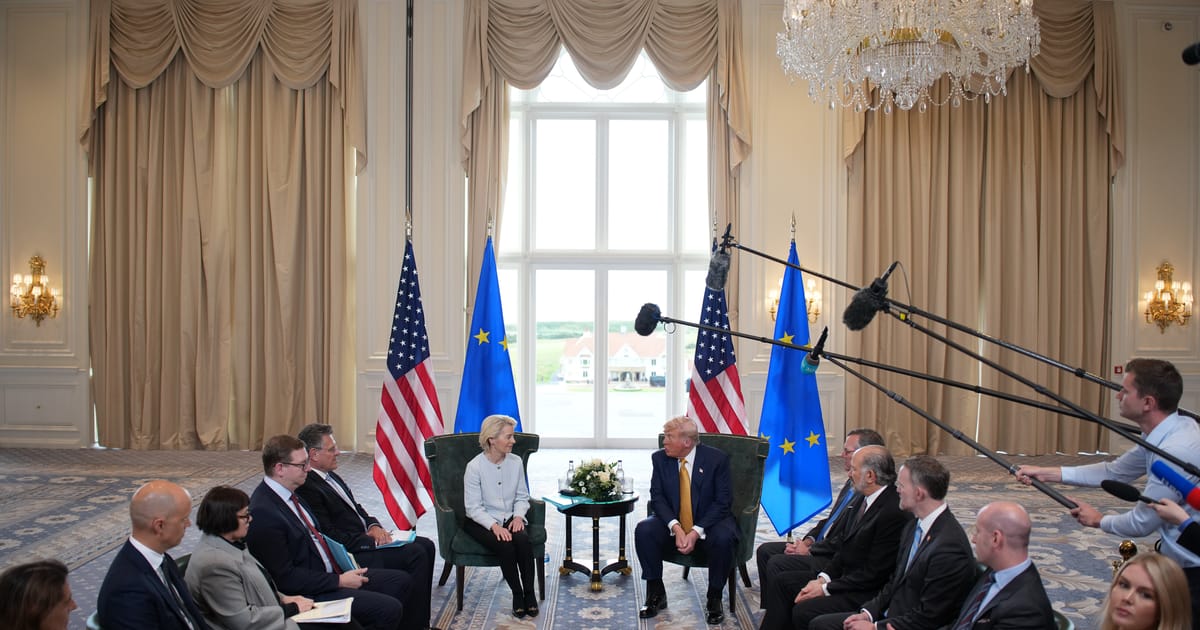Escalate to de-escalate
Trump’s escalation had stunned EU trade negotiators, who had been led to believe by their U.S. interlocutors that a preliminary deal was within reach.
A battle of nerves ensued, as Trump announced a string of other deals — including one with Japan that set a baseline tariff of 15 percent while offering relief to its auto industry. Some observers saw that setting a benchmark for the future terms of the €1.6 trillion transatlantic trade relationship.
At the same time, the 27-nation bloc activated its trade countermeasures, drawing up a list targeting €93 billion in U.S. goods — ranging from aircraft to autos, and from soybeans to Kentucky bourbon — that would face retaliatory tariffs of up to 30 percent. Those were due to enter force from Aug. 7 onwards, absent a deal.
Von der Leyen had earlier stressed the significance of the $1.7 trillion transatlantic trade relationship — the world’s largest — and appealed to Trump to do the biggest deal that either of them have ever done.
Speaking afterwards, she said: “The two biggest economies should have a good trade flow between us. I think we hit exactly the point we wanted to find. Rebalance but enable trade on both sides. Which means good jobs on both sides of the atlantic, means prosperity on both sides of the atlantic and that was important for us.”
Unity and friendship
Trump, who said earlier he was in a bad mood, declared himself satisfied with the outcome.
